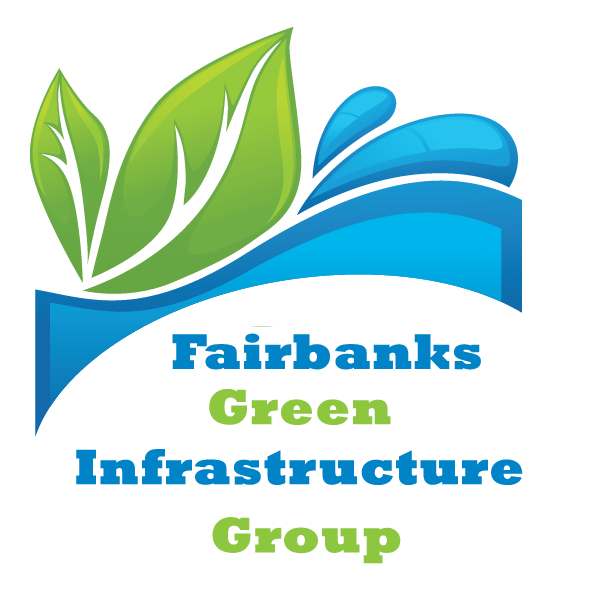YOU can easily install a green infrastructure project on your property.
Direct Benefits to YOU
Cost share programs (cuts the personal cost)
Saves you money on water
Can prevent damaging flooding
Return on your investment
Increase in your property value
Contributes to the attractiveness of your property
Conservation for future generations
Direct Benefits to our Environment
- Filter pollutants and dust from the air
- Provide shade and lower temperatures in urban areas
- Reduce erosion of soil into our waterways
These are just a few of the environmental benefits that green spaces provide.
Urban advantages: More green space within a city’s boundaries can improve the urban environment. Advantages are: helping regulate air quality and climate, reducing energy consumption by countering the warming effects of paved surfaces, recharging groundwater supplies and protecting lakes and streams from polluted runoff. (1)
Water quality protection: Proper landscaping reduces nitrate leaching from the soil into the water supply and reduces surface water runoff, keeping phosphorus and other pollutants out of our waterways and preventing septic system overload. (2)
Reduced heat buildup: Trees in a parking lot can reduce on-site heat buildup, decrease runoff and enhance night time cool downs. (3)
Reduced soil erosion: A dense cover of plants and mulch holds soil in place, keeping sediment out of lakes, streams, storm drains and roads; and reducing flooding, mudslides and dust storms. (4)
Improved air quality: Trees, shrubs and turf remove smoke, dust and other pollutants from the air. One tree can remove 26 pounds of carbon dioxide from the atmosphere annually, equaling 11,000 miles of car emissions. One study showed that one acre of trees has the ability to remove 13 tons of particles and gases annually. (5) • 2,500 square feet of turf absorbs carbon dioxide from the atmosphere and releases enough oxygen for a family of four to breathe. (6)
Lower attic temperatures: Trees shading homes can reduce attic temperatures as much as 40 degrees. According to the EPA, urban forests reduce urban air temperatures significantly by shading heat sinks such as buildings and concrete and returning humidity to the air through evaporative cooling. (7)
Natural resource conservation: By using trees to modify temperatures, the amount of fossil fuels used for cooling and heating is reduced. Properly placed deciduous trees reduce house temperatures in the summer, allowing air conditioning units to run 2 to 4 percent more efficiently. The trees also allow the sun to warm the house in the winter. (8)
Green roofs cool urban hot spots: Led by cities such as Chicago and Toronto, as well as a number of universities, evidence is mounting that green roofs (i.e. roofs totally or partially covered with vegetation) can play an important role in saving energy, reducing the urban heat island effect and adding more green space to a built environment. (9)
Cooler summer days: Lawns will be 30 degrees cooler than asphalt and 14 degrees cooler than bare soil in the heat of summer. (10)
Natural resource conservation: Homeowners can “grasscycle” by leaving grass clippings on the lawn when mowing. The clippings quickly decompose and release valuable nutrients back into the soil to feed the grass, reducing the need for nitrogen by 25 to 50 percent. Modern mulching lawn mowers make “grasscycling” even easier, and homeowners can reduce their mowing time by 30 to 40 percent by not having to bag clippings. (11)
Reduced pollution: Trees naturally remove pollutants from the air, so every tree that’s subtracted from a city’s ecosystem means some particulate pollution remains that should have been filtered out. In Washington, that amounts to 540 extra tons each year. (12)
Rainfall retention: A healthy, sodded lawn absorbs rainfall 6 times more effectively than a wheat field and 4 times better than a hay field. (13)
Natural storm water management: A big tree removes 60 to 70 times the pollution than a small tree. (14)
1: UW-Madison Department of Urban and Regional Planning: EcoPlanIT Madison: Green Space Goal;http://urpl.wisc.edu/ecoplan/index.php?page=goal
2: Virginia Cooperative Extension: The Value of Landscaping; http://www.ext.vt.edu/pubs/envirohort/426-721/426-721.html#TOC
3: Wolf, K.L., Ph.D., University of Washington; http://www.cfr.washington.edu/research.envmind/ transportation.html; Wolf, K. L. 2004, _ rees, Parking and Green Law: Strategies for Sustainability_ . Stone Mountain, GA: Georgia Forestry Commission, Urban and Community Forestry;http://www.cfr.washington.edu/research.envmind/ Roadside/Trees_Parking.pdf
7 & 8: Virginia Cooperative Extension: The Value of Landscaping; op. cit. 6 Turfgrass Resource Center: Our Precious Plane; http://www.turfgrasssod.org/trc/environment.html
9 & 10: http://www.greenroofs.com/aboutus.htm
11, 13 & 14: Environmental Protection Agency: “Greenscaping, The Easy Way to a Greener, Healthier Yard.”;http://www.epa.gov/oppfead1/Publications/catalog/greenscaping.pdf
12 & 15: Time Magazine: Why Are Cities Cutting Down Trees;http://www.landscapeonline.com/research/article/9263




